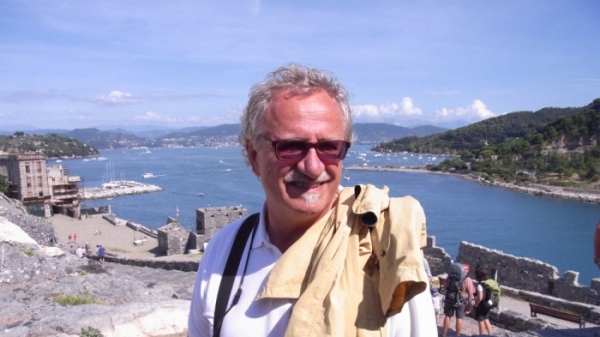On our first trip to Italy in the early 1970’s, my wife Viny and I decided to spend a whole month in the City of Rome. It was important for us to spend time in the capital to explore the remnants of the wealth of the Roman Civilisation and the ever-present legacy left by the popes. We were overwhelmed by the sheer number and splendour of the many ancient works which are still visible today. Most notable of these ancient works were the numerous monumental fountains found throughout the city. I have retraced our steps to put together a walking tour celebrating some of the fountains we saw on this first trip to Rome. We have continued to revisit these sites when introducing travellers on our tours to Italy and the fountains remain a focal point not only for our tours but for so many visitors to La Città Eterna (the eternal city).
Water from Ancient Rome to the Time of the Popes
The fountains represent the terminal points of what are quite amazing feats of engineering, Aqueducts. Using the power of gravity, aqueducts, brought water from outside sources some-times many hundreds of kilometres to the ever-growing metropolis for drinking, irrigation and most importantly, use in public baths. But it wasn’t always so, with the collapse of the Western Roman Empire in the 5th century, Rome was reduced from a shining, bustling metropolis to a small village on the banks of the River Tiber. From the 1500’s onwards, the Popes: the new emperors of Rome, began to rejuvenate and beautify the city once more. They initiated large scale public works in their unique Baroque style to establish Rome yet again as the centre of the world.
Rome more than any other city in the world is adorned by fountains large and small. The Popes restored many of the Roman aqueducts not only as an important service to supply the people with drinking water in public fountains but also to feed the splendid fountains which adorned the gardens and courtyards of the grand palaces of the noble families.
Walking Tour of Rome Celebrating Water
On our first visit Viny and I booked into a pensione which was cheap and cheerful but had a great outlook with huge windows overlooking Piazza della Repubblica. The same room if we were to stay there today, I dare say would set us back a bit more as it is part of the luxury Palazzo Naiadi Hotel. It was mid-July and therefore very hot. Air-conditioning was virtually non-existent in the early 70s, so we welcomed the sight of a fountain during our long walks through the city streets.
La Fontana Delle Naiadi – Piazza della Republica
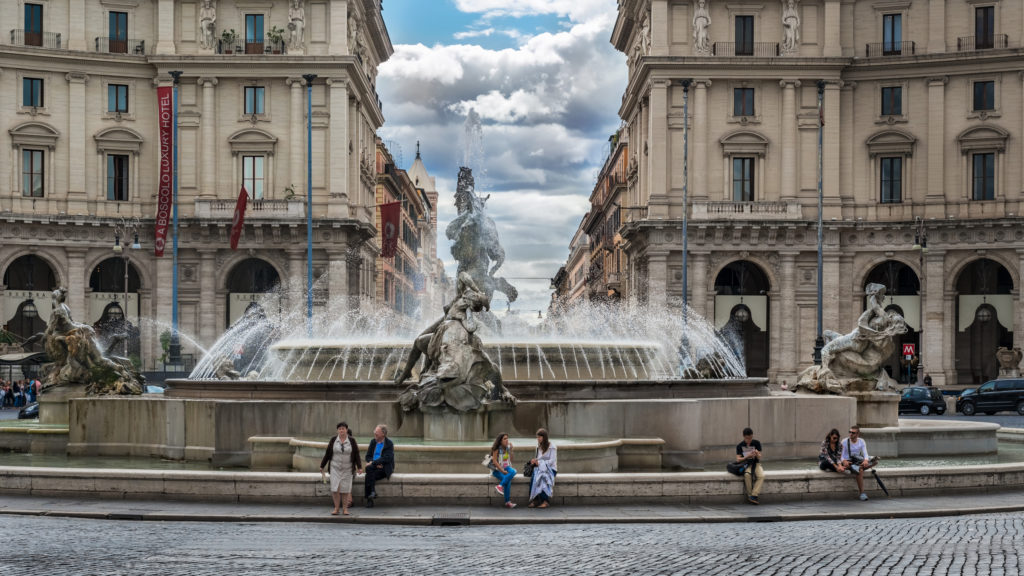
I would like to begin this virtual celebration of water walking tour around Rome with the large fountain in Piazza della Repubblica. I love this fountain as it became such an important focal point during our first visit to Rome. We used it to cool our feet after a long day exploring the city. Something that cannot be done today. An immense space required a grandiose fountain: La Fontana delle Naiade.
Construction on the fountain started in the late 1800s at a time of Victorian modesty. The fountain is adorned with nude statues in erotic poses designed by Sicilian sculptor Mario Rutelli, whose affairs were the talk of the town. In fact, the authorities postponed the unveiling of the fountain because they were concerned it may have corrupted the citizens of Rome. It seemed that the fountain was doomed, but the public loved it and it became one of the most important monuments in the beautification of Rome.
The fountain makes a welcoming backdrop to the Michelangelo deigned Basilica of Santa Maria degli Angeli and the immense ancient public baths of Emperor Diocletian.
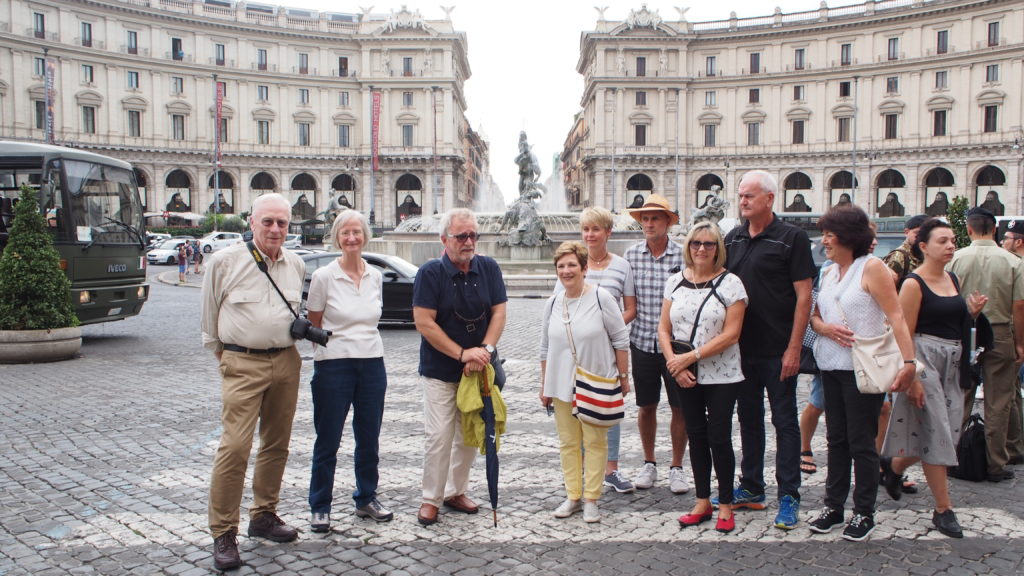
Fontana del Mose – Quirinale
A short walk from Piazza della Repubblica in the Qurinale District there is another important fountain, La Fontana del Mose’: the Fountain of Moses otherwise known as the Fontana dell’Acqua Felice. It was built in the late 1500’s and marks the end of an old Roman Aquaduct. It was commissioned by Pope Sixtus V (Felice Peretti) hence Acqua Felice/happy water to repopulate the area.
The fountain depicts biblical scenes of water. The main statue in the centre of the fountain is of a somewhat large Moses parting the waters of the Red Sea.
From its inception the fountain was doomed, as the statue of Moses has a likeness of Pope Sixtus V which prompted ridicule at the time from the Roman public. I have personally always liked the fountain despite the Romans continual dislike of this very important structure.
Fontana del Tritone – Piazza Barbarini
Our virtual tour of the fountains of Rome continues down to Piazza Barberini so called after the great noble Barberini family whose enormous palace overlooks the Piazza.
The Barbarini square is dominated by the impressive “Fontana del Tritone” by sculptore Bernini. The fountain celebrates the powerful princely family who gave Rome administrators, cardinals and Pope Urban VIII, who was a great patron of the arts and of Bernini.
The fountain is without doubt one of the most beautiful in the City of Rome; especially for the naturalism with which Bernini represented the sea monster half man half fish. The triton has a powerful physical build and is shown blowing a conch from which water pours forth.
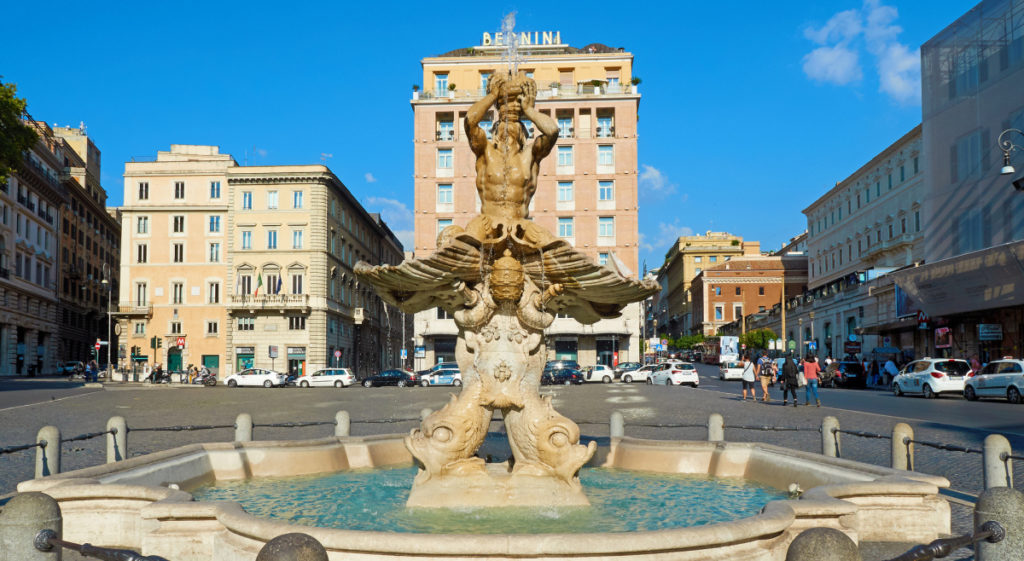
Fontana della Barcaccia – Piazza di Spagna
We move onto the popular Piazza di Spagna: The Spanish Steps. One needs to have in mind that this area of Rome was once an area of exclusivity and distinction. It was frequented and populated by noble, high church officials, diplomats and important overseas visitors. Now, it retains only fragments of this past era but still today travellers flock here in their millions.
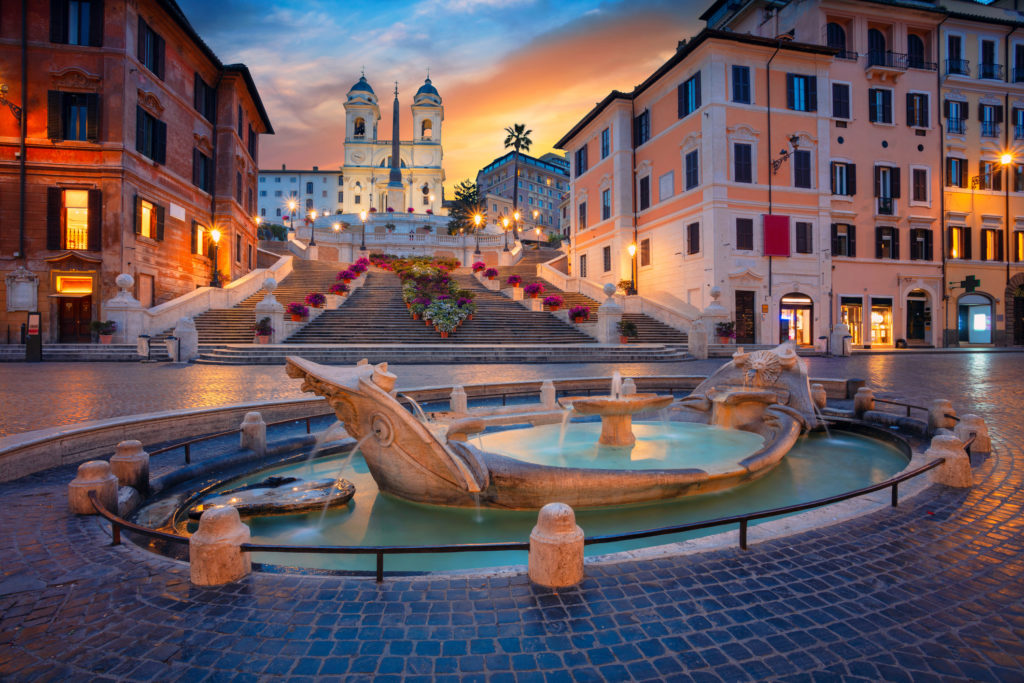
In the middle of the piazza and at the base of the Spanish Steps is the Fountain of the Barcaccia (meaning ugly old boat). The Barcaccia was a large barge used for the transportation of barrels of wine along the banks of the River Tiber. The fountain is lower than the street level because of the low pressure of the Virgo Aqueduct, which still feeds water to the fountains of Trevi and Piazza Navona. The aqueduct has virtually remained unchanged since the time of emperor Augustus and some of it can still be navigated by boat today.
We visit Piazza di Spagna many times during the year with our small groups. It is always an excellent spot for a photo especially those keen enough to walk onto the Barcaccia fountain and have a drink of water spouting from the sides of the boat. Everyone is pleasantly surprised by the purity and freshness of the water. It is a relief especially during hot steamy days.
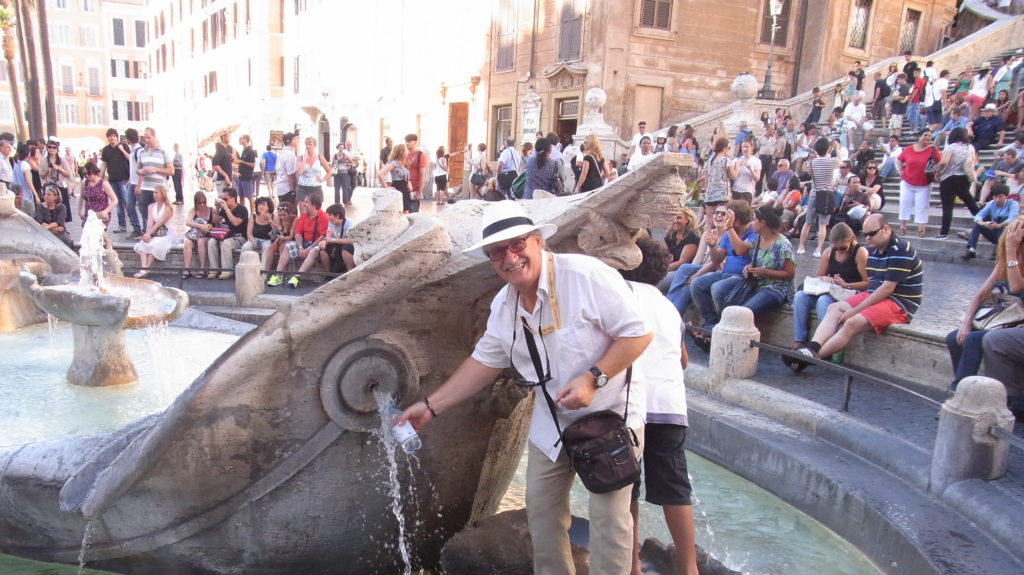
Fontana di Trevi
It is about now that we make our way to the Fountain of Trevi, the most famous fountain in the world. Approaching the fountain there is a feeling of anticipation and excitement. The feeling was the same for Viny and I visiting all those years ago for the first time and we still feel the same excitement when we visit today.
Built between 1732-1762 according to a project by Nicola Salvi. It is fed by the Virgo Aqueduct, Aqua Vergine. Acqua Vergine is named after a legendary appearance of a young girl who indicated the spring to some thirsty Roman soldiers during their hunt.
At the centre of the fountain stands the majestic figure of the god, Oceanus. In the niches on either side stand the personifications of Abundance and Health. The real protagonist of the fountain is water, its’ movement, sound and the manner in which it forcefully gushes from the rocks into the basin.
The name of the fountain is uncertain – some say it is the fountain “delle tre vie”, of the three roads which converge onto the Piazza. The modern legend is that travellers come to the Fountain of Trevi throw a coin over their shoulder and promise themselves they will return to Rome, as depicted in the famous Hollywood film, Three Coins in a Fountain. The legend, of course, is much older and it stems from the theory that the water from the aqueduct was so beautiful that people returned just to drink it. Throwing coins in a fountain has now been copied all over the world. The Fountain of Trevi has a magical attraction unsurpassed anywhere in the world.
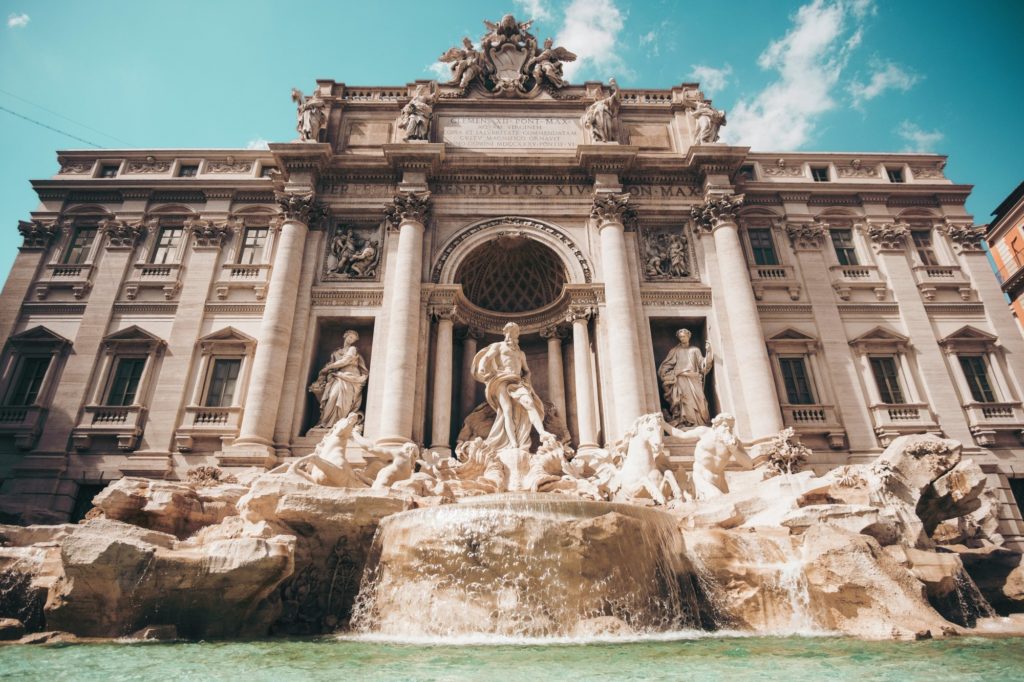
Fontana dei Quattro Fiumi
Another striking example of Bernini’s excellence is the Fountain of the Four River’s in the middle of Piazza Navova.
In 1651 Innocent X of the noble Pamphili Family wanted a great fountain to adorn the piazza in front of his family’s palace. They commissioned Bernini who created this now famous Fountain of the Four Rivers.
The Four Rivers represent the four continents known at the time of its construction. It makes a dramatic backdrop to this much-loved piazza of Rome.
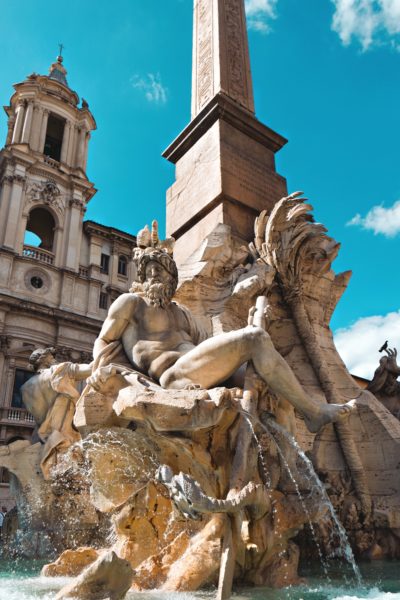
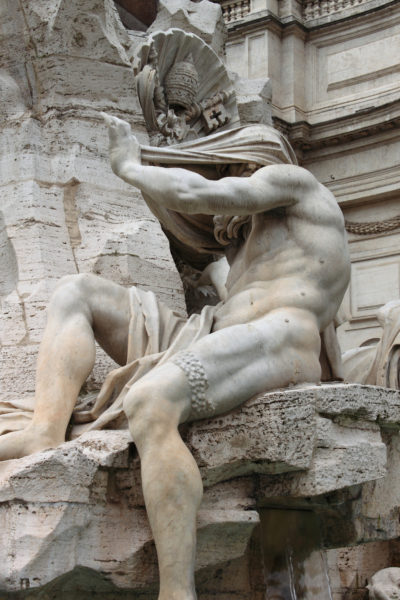
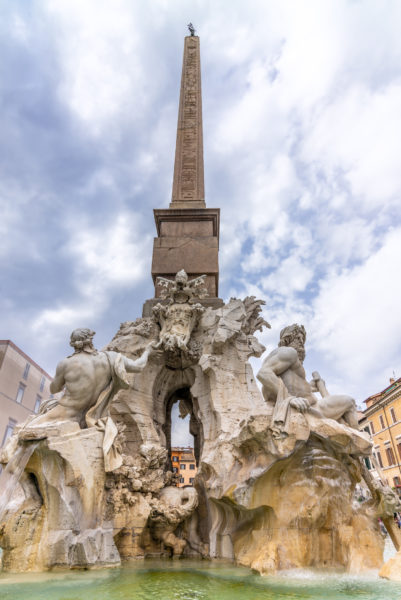
Nasoni
The beauty of Rome is that you will virtually find a fountain around every corner of the city. This brings me to my final reference of the importance of water in Rome, and that is the Nasoni. There are nearly some two and a half thousand small drinking fountains scattered all over the city. Because of their characteristic design they resemble large noses which in Italian translates to Nasoni. These iconic fountains provide fresh cold water all year round and are very much loved by both locals and travellers alike particularly during the hot summer months.
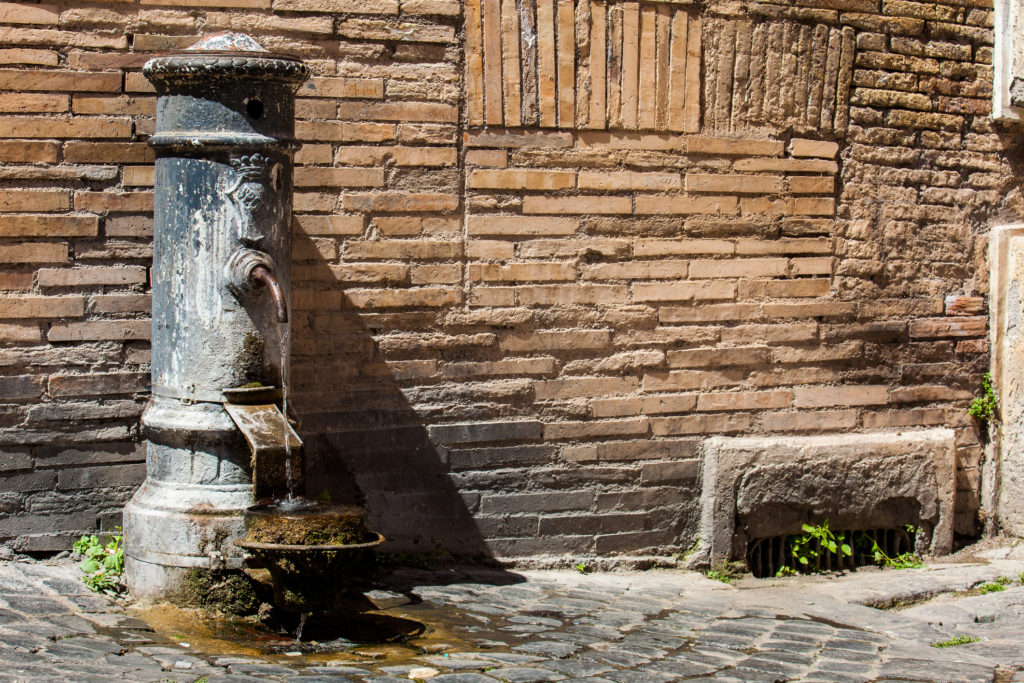
There are over 300 monumental fountains throughout Rome and we have just touched on the most famous. We hope this inspires travellers to visit this wonderful city. For those of you who have visited Rome, we hope this article has brought back fond memories. Perhaps it may inspire another trip to revisit these sites and discover the many other fountains in Rome that celebrate the importance of water.
Vita Italian Tours plans private tours and itineraries to Rome throughout the year.
Contact us today to plan your visit.
Written by. Mario Vitellone – Founder/Director of Vita Italian Tours
